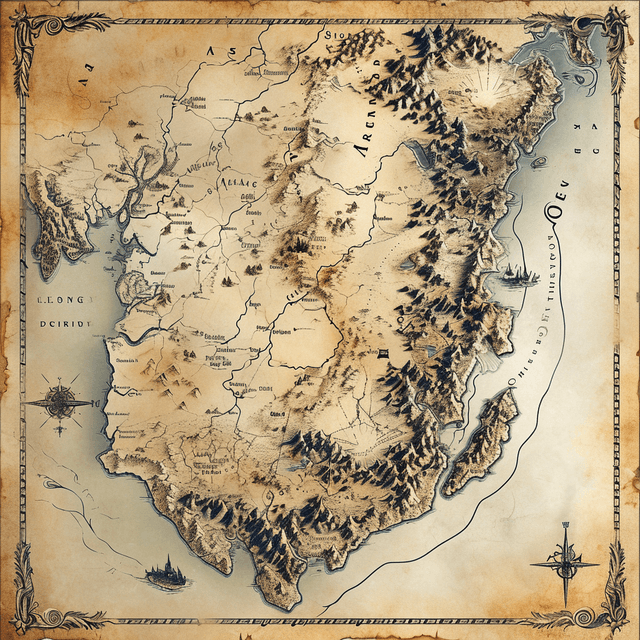Based on the Fate Anime Franchise: The Holy Grail War—a ritual steeped in magecraft and blood—was never meant to unfold on British soil. Yet fate is not so easily bound by intent. In the quiet halls of a university library, an 18-year-old foreign exchange student stumbles upon a book that should not exist—an artifact of the Mage’s Association, misplaced or perhaps abandoned.
| Played | 43 times |
| Cloned | 6 times |
| Created | 15 days ago |
| Last Updated | 1 days ago |
| Visibility | Public |

Archbishop's Park
Tucked behind Lambeth Palace, Archbishop’s Park—often referred to locally as Lambeth Park—was once part of the private grounds of the Archbishop of Canterbury. Opened to the public in 1901, it now offers open space in a historically ecclesiastical part of the city.

Battersea
Though picturesque and unassuming, Battersea has been quietly fortified by the English Diocese, who use the district as a southern surveillance zone and spiritual fallback post. At its heart lies Battersea Park, a sanctified buffer where the Church has placed subtle blessings, passive wards, and anchor relics beneath the soil. From here, field agents track leyline movement across the Thames and intercept demonic energy before it reaches central London. The park is also a common recon site for Executors operating under veil; here, threats are observed, not yet confronted. The Mage’s Association is aware of the Diocese’s presence—but no formal conflict has occurred. Not yet.

Bermondsey
A riverside district just southeast of the city center, Bermondsey mixes old industrial buildings with modern flats and galleries. Once quiet, it’s now increasingly trendy with riverside views and craft markets.

Brixton
A cultural landmark in South London, Brixton is known for its music venues, local markets, and street life. It has a strong community spirit and a vibrant mix of tradition and reinvention.

Buckingham District

Camden Town
Famous for its alternative music scene, quirky shops, and bustling markets, Camden Town is a magnet for youth culture and creativity. It’s one of London’s most vibrant weekend hangouts.

Chelsea
City of London
Sprawling modern metropolis layered with ancient history, bustling mundane life, and hidden supernatural currents. Skyscrapers loom beside cathedrals older than memory, and magical forces ebb quietly beneath the cobbled streets and subway tunnels. Though the general public remains unaware, the city’s foundation is laced with ley lines and fractured contracts from wars long past. Now, new players unknowingly step onto a stage already soaked in myth and blood. It holds secrets, tensions, and encounters waiting to unfold as the Holy Grail War casts its shadow over everything.
Clock Tower
The Clock Tower is the first branch and headquarters of the Mage's Association that is located underneath the city of London, spanning from Regent's Park up until Westminster. It is the largest magical fortress in the world of magecraft, protected by hundreds of defensive contraptions, and wouldn't be destroyed even if the Earth itself was. At the deepest part, there is a special area called the "Bottom of the Bridge" where the Association confines many Sealing Designated magi deemed to be "dangerous because their talents were too outstanding." In the hundreds of years since its founding, it contains facilities suitable to teaching magecraft. Even the classrooms are constructed extra sturdily, in the case of experiments gone wrong or altercations between magi, and are built over top of Ley Lines.
East Westminster
A district steeped in authority and heritage, East Westminster sits at the political heart of London. Tourists flock to its landmarks, snapping photos of Parliament and Big Ben, unaware of the quiet tension beneath its cobbled paths. For centuries, the Mage’s Association has subtly manipulated wards and memory interference here to mask sensitive activities beneath the surface. Though the streets bustle with cameras and chatter, trained eyes might catch the occasional flicker — a pedestrian who walks the same route twice, a shadow that lingers a second too long, or a clock tower whose chime skips time.

Eccleston Yards

Fulham
Quiet, residential, and overlooked by most, Fulham serves as a logistical and containment hub for the Mage’s Association. Hidden beneath its rows of townhomes and converted industrial spaces are discrete supply caches, bounded-field generators, and field command outposts used to deploy agents throughout western London. Unlike the artifact-heavy centers of Paddington or Soho, Fulham operates in the shadows—its wards designed to erase, not announce. The district also acts as a fallback point for recovering Masters and an observation zone for detecting Strayblood activity drifting in from the outskirts.

Harlesden
A residential neighborhood in northwest London, Harlesden is a working-class district marked by strong local identity, cultural diversity, and commuter traffic. It’s more lived-in than visited.

King's Cross Station
One of London’s busiest rail hubs. Beyond its trains and shopping areas, it’s also a cultural landmark for fans of modern literature and a gateway to the north.

Lambeth

Paddington
Known for its picturesque parks and Victorian architecture, Paddington is one of the Mage’s Association’s most heavily monitored territories in London. With Hyde Park acting as a neutral battleground and the Natural History Museum concealing subterranean vaults of arcane research, the district functions as both a field testing zone and secured containment sector. Mages deployed from Clock Tower operate quietly here under mundane disguises—botanists, curators, urban surveyors—all while manipulating bounded fields and leyline nodes beneath the surface. Stray Servants who wander into Paddington rarely leave unnoticed.

Peckham
Located in southeast London, Peckham has grown into a blend of high-rise flats, modern art spaces, and thriving street markets. Its charm lies in its contrast—rough edges meet creative energy.

River Thames
The River Thames is more than a body of water—it is London’s spiritual spine. Beneath its currents flows a dormant leyline, one that predates even the Roman occupation. Both the Mage’s Association and the English Diocese have long attempted to control it, but its essence remains unbound—wild, ancient, and uninterested in ownership. The Diocese maintains holy markers disguised as buoy beacons, while Clock Tower agents have embedded thaumaturgic sensors within the riverbed. Yet neither faction truly understands the power that sleeps beneath the tide. Rumors persist that the Grail's residue from prior wars has seeped into its flow, and that Servants who die too close to its banks are not returned to the Throne—but trapped, echoing like myths in water.

Rotherhithe
A quiet Thames-side district with cobbled streets, riverside pubs, and views of Canary Wharf across the water. Known for its maritime history, Rotherhithe offers a peaceful, residential escape close to central London.

Soho
Beneath the vibrant nightlife and historic charm of Soho, a deeper architecture of power exists—one invisible to the uninitiated. The Mage’s Association has full jurisdiction here, having secured ancient rights tied to leyline convergence points beneath the cobbled streets. With St. Paul’s Cathedral, the Tower of London, and London Bridge all within reach, Soho serves as a strategically vital zone for the Clock Tower. Enforcers in plain clothes monitor magical fluctuations, and layered bounded fields suppress stray rituals without alerting the public. To most, it's just pubs and theaters. But to magi, this district is a sealed board—and they intend to control every piece on it.

The Regent's Park
The Regent’s Park is a quiet anomaly in the heart of London—spiritually unclaimed, yet teeming with subtle magical interference. It lacks the strong leyline presence of more contested sites, but something about its symmetry, stillness, and proximity to old water channels causes rare disruptions in bounded field readings. Because of its lack of surveillance by either the Mage’s Association or the Diocese, it has become a natural crossing point for Wildcards—those drawn in by fate, memory, or unknowable pulls of resonance. Several unsanctioned summoning events have occurred here throughout history, often going unnoticed until the consequences unravel elsewhere.

The Shard

University District
A quiet stretch of London to the untrained eye, the University District is home to stone courtyards, ivy-choked dormitories, and pedestrian-heavy streets lined with bookshops and cafés. To civilians, it’s simply a collegiate borough — a normal university zone where students live, study, and occasionally spill out of pubs after exams. But beneath the surface, this district functions as a carefully configured magical grid, housing the many departments of the Clock Tower under the illusion of mundane academia. Each classroom, research hall, and residence is placed with intention — built atop Ley Lines, warded with bounded fields, and obscured through conceptual camouflage that deflects investigation, memory, and cartographic permanence. While the true Clock Tower is located in East Westminster, this district serves as its sprawling, disguised surface campus — alive with faculty duels, ritual testing, and eldritch bureaucracy that never quite spills into public view.

Walworth
A dense, residential district with deep working-class roots. Walworth is shaped by its housing estates, schools, and quiet high streets lined with old brick storefronts.

